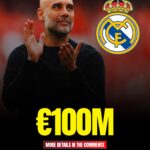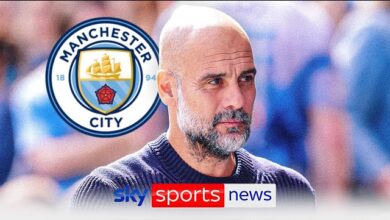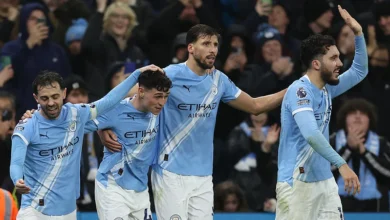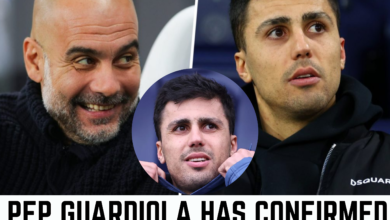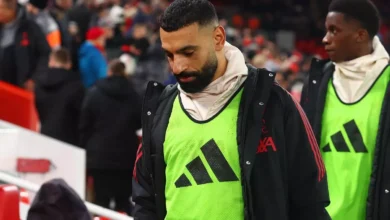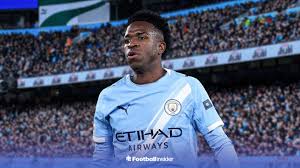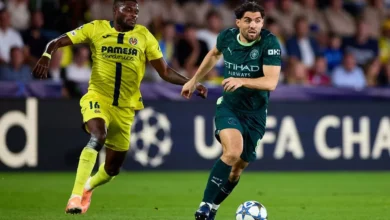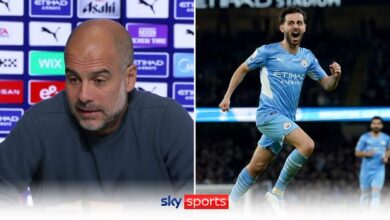Liverpool’s Bold Pursuit of Rodrygo: The £87m Gamble That Could Define Arne Slot’s Revolution
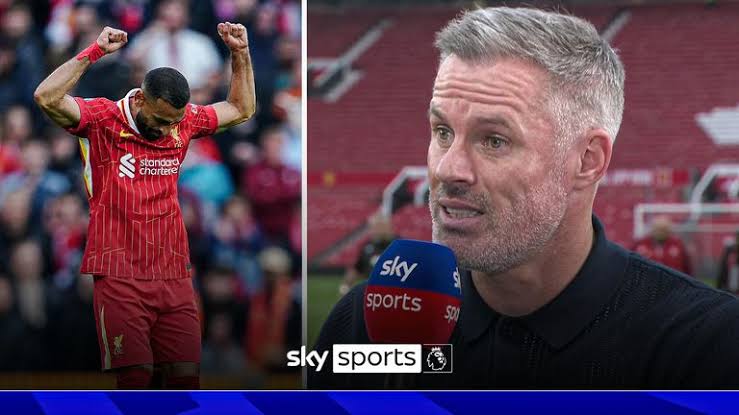
In the ever-evolving theater of modern football transfers, Liverpool finds itself at the epicenter of what could become one of the summer’s most ambitious and transformative deals. The Merseyside giants, under the stewardship of new manager Arne Slot, are reportedly engaging in serious discussions to acquire Real Madrid’s Rodrygo Goes, a move that would not only signal Liverpool’s intent to compete at the highest level but also potentially reshape their attacking dynamics for years to come.
The pursuit of the 24-year-old Brazilian represents more than just another high-profile signing; it embodies Liverpool’s strategic response to the changing landscape of elite football, where clubs must constantly reinvent themselves to maintain their competitive edge. As the Reds navigate the complexities of squad rebuilding following Jürgen Klopp’s departure, the potential acquisition of Rodrygo symbolizes both their ambition and their understanding of what it takes to compete with Europe’s finest.
Liverpool’s transfer activity this summer has been nothing short of remarkable, demonstrating a level of ambition and financial commitment that has surprised many observers. The acquisition of Florian Wirtz from Bayer Leverkusen for an initial fee of £100 million, potentially rising to a British-record £116 million, has already sent shockwaves through the football world. The German playmaker’s arrival represents a statement of intent from the club’s hierarchy, signaling their determination to provide Arne Slot with the tools necessary to implement his tactical vision.
The 22-year-old Wirtz’s impact was immediately evident in Liverpool’s pre-season activities, particularly in their impressive 5-0 victory over Stoke City in a behind-closed-doors friendly. The German international’s performance was described as mesmerizing, with his technical ability, creativity, and tactical intelligence on full display. His integration into Liverpool’s system appears seamless, suggesting that the substantial investment made in securing his services was well-calculated.
However, Liverpool’s transfer business extends beyond Wirtz’s arrival. The imminent signing of Hugo Ekitike from Eintracht Frankfurt for £79 million represents another significant investment in the club’s attacking options. The French striker’s prolific record and versatility make him an ideal addition to Slot’s evolving tactical setup, providing the Dutch manager with multiple options in the final third
These acquisitions demonstrate Liverpool’s commitment to maintaining their status among Europe’s elite, but they also create a fascinating tactical puzzle for Slot to solve. The integration of such high-profile talents requires careful planning and execution, particularly given the need to maintain squad harmony and ensure that existing players continue to feel valued and motivated
Rodrygo’s situation at Real Madrid presents a compelling narrative that extends beyond simple transfer speculation. The Brazilian forward, despite his undeniable talent and contributions to the club’s recent successes, finds himself in a position where his role has become increasingly uncertain. Under Xabi Alonso’s management, Rodrygo is no longer considered an indispensable part of Real Madrid’s tactical setup, creating an opportunity that Liverpool appears keen to exploit.
The 24-year-old’s career trajectory at the Santiago Bernabéu has been marked by both triumph and frustration. While he has contributed to multiple Champions League victories and domestic successes, his individual development has been somewhat stunted by positional uncertainty and tactical constraints. The statistical analysis of his performances across different positions reveals a fascinating insight into his potential impact at Liverpool.
When deployed as a left winger, Rodrygo’s numbers are particularly impressive: 6 goals and 6 assists in just 12 appearances, representing a goal involvement rate that would make him one of the most productive wide forwards in world football. This productivity rate suggests that when utilized in his preferred position, Rodrygo possesses the capability to be a game-changing performer at the highest level.
Conversely, his deployment as a right winger, while still productive with 8 goals and 5 assists in 31 appearances, shows a lower rate of direct goal involvement per match. This positional analysis becomes crucial when considering his potential fit within Liverpool’s tactical framework and how Slot might maximize his considerable abilities.
Perhaps most tellingly, Rodrygo’s struggles when deployed as a center-forward—with zero goals in 10 appearances—highlight the importance of positional suitability in modern football. This data suggests that his optimal deployment lies in wide positions, particularly on the left flank where he can exploit space, utilize his pace, and create scoring opportunities for himself and his teammates.
The comparison between Rodrygo and former Liverpool legend Sadio Mané provides a fascinating framework for understanding the potential impact of this transfer. Mané’s transformation from a promising right-winger at Southampton to one of the most feared left-sided forwards in world football during his time at Liverpool offers a compelling template for how Rodrygo might develop under Slot’s guidance.
When Mané arrived at Liverpool from Southampton for £34 million in 2015, few could have predicted the extraordinary impact he would have on the club’s fortunes. His final season at Southampton saw him score 9 goals and provide 4 assists in 21 appearances as a right winger, statistics that, while respectable, hardly suggested the world-class performer he would become at Anfield.
The key to Mané’s transformation lay in Liverpool’s tactical setup and the way Klopp utilized his unique skill set. By deploying him primarily on the left wing, where his right-footed delivery and tendency to cut inside could be maximized, Liverpool unlocked a level of performance that had only been hinted at during his Southampton days. Mané’s pace, directness, and clinical finishing ability made him a nightmare for opposing defenders, while his work rate and tactical intelligence ensured he remained an integral part of Liverpool’s defensive structure.
The parallels with Rodrygo are striking. Like Mané, the Brazilian possesses the pace and technical ability to excel in wide positions, and his statistical profile suggests that he, too, would benefit from deployment on his preferred left flank. The potential for similar transformation exists, particularly given Liverpool’s track record of maximizing the potential of attacking players and their ability to create tactical systems that highlight individual strengths while maintaining collective effectiveness.
Arne Slot’s tactical philosophy, developed during his successful tenure at Feyenoord, emphasizes attacking fluidity, positional interchange, and high-intensity pressing. The potential addition of Rodrygo to a forward line already featuring new signings like Wirtz and Ekitike creates fascinating possibilities for tactical innovation and system evolution.
Slot’s preferred 4-2-3-1 formation, with its emphasis on wide players cutting inside and creating overloads in central areas, appears ideally suited to Rodrygo’s skill set. The Brazilian’s ability to drift between wide and central positions, combined with his pace and dribbling ability, would provide Slot with the tactical flexibility that modern football demands.
The integration of Rodrygo alongside existing talents like Mohamed Salah, Darwin Núñez, and potentially Luis Díaz (should he remain at the club) would create one of the most potent attacking units in world football. The depth and quality of options available would allow Slot to rotate his squad effectively while maintaining high performance levels across multiple competitions
Furthermore, Rodrygo’s Champions League experience and proven ability to perform in high-pressure situations would be invaluable for Liverpool’s European ambitions. His familiarity with the demands of elite competition and his track record of delivering in crucial moments make him an ideal addition to a squad with continental aspirations
The potential departure of Luis Díaz to Bayern Munich adds another layer of complexity and urgency to Liverpool’s pursuit of Rodrygo. Díaz’s possible exit would create a significant void in Liverpool’s attacking options, particularly on the left flank where the Colombian has been a consistent performer since his arrival from FC Porto.
Bayern Munich’s reported interest in Díaz, with suggestions that they are prepared to submit a second offer following their initial approach, creates a timeline pressure that Liverpool must navigate carefully. The loss of Díaz would represent not just a reduction in squad depth but also the departure of a player who has shown the ability to influence games at the highest level.
In this context, Rodrygo’s acquisition becomes less of a luxury signing and more of a strategic necessity. His ability to operate effectively on the left wing, combined with his experience and proven quality, makes him an ideal replacement for Díaz should the Colombian’s departure materialize. The reported £87 million fee, while substantial, begins to appear more reasonable when viewed as a like-for-like replacement for a player of similar caliber and tactical importance.
The timing of these negotiations also suggests that Liverpool’s hierarchy is taking a proactive approach to squad management, recognizing that in the modern transfer market, waiting until departures are confirmed can result in missed opportunities and inflated prices for replacement players.
Liverpool’s reported willingness to invest £87 million in Rodrygo’s acquisition represents a significant financial commitment that reflects both the club’s current ambitions and the realities of the modern transfer market. When combined with the previous acquisitions of Wirtz and Ekitike, Liverpool’s total summer expenditure would exceed £250 million, a figure that places them among the most active spenders in European football.
This level of investment raises questions about Financial Fair Play compliance and the sustainability of such spending patterns. However, Liverpool’s strong commercial performance, Champions League qualification, and the potential for player sales (including the possible Díaz transfer) provide the financial foundation necessary to support such ambitious transfer activity.
The market dynamics surrounding elite attacking talent also justify the substantial fees involved. With clubs like Paris Saint-Germain, Manchester City, and Real Madrid willing to pay premium prices for proven performers, Liverpool must compete at this level to secure their primary targets. The alternative—pursuing second-tier options at lower prices—would likely result in a dilution of quality that could prove counterproductive in the long term.
Furthermore, the age profile of Liverpool’s target signings suggests a focus on long-term value rather than short-term fixes. At 24, Rodrygo is entering his prime years and would likely provide several seasons of peak performance, making the substantial initial investment more palatable from an amortization perspective
Liverpool’s pursuit of Rodrygo must be understood within the broader context of the club’s strategic evolution under new ownership and management structures. The appointment of Arne Slot represents a new chapter in Liverpool’s history, and the club’s transfer activity suggests a commitment to providing him with the resources necessary to implement his tactical vision successfully.
The focus on young, technically gifted players with proven track records at the highest level aligns with modern football’s emphasis on versatility, tactical intelligence, and physical attributes. Rodrygo’s profile fits perfectly within this framework, offering the combination of experience and potential that characterizes successful long-term investments in player assets.
Moreover, Liverpool’s willingness to compete for players of Rodrygo’s caliber sends a clear message to both current players and potential future targets about the club’s ambitions. In an era where player recruitment is increasingly competitive, demonstrating the financial capability and tactical sophistication to attract elite talent becomes crucial for maintaining competitive advantage.
Liverpool’s reported pursuit of Rodrygo represents more than just another high-profile transfer; it embodies the club’s strategic response to the evolving demands of elite football. The potential £87 million investment, while substantial, reflects both the market realities for proven talent and Liverpool’s commitment to providing Arne Slot with the tools necessary for success.
The parallels with Sadio Mané’s transformation provide an encouraging template for how Rodrygo might develop at Anfield, while his statistical profile suggests that deployment in his preferred left-wing position could unlock levels of performance that have been constrained at Real Madrid. The tactical fit with Slot’s system appears promising, and the timing of the potential transfer aligns well with Liverpool’s broader squad development strategy.
As negotiations continue and the summer transfer window progresses, Liverpool’s pursuit of Rodrygo will serve as a key indicator of the club’s long-term ambitions and their commitment to competing at the highest level of European football. Success in securing his signature would represent not just an individual triumph but a statement of intent that could define the early years of the Slot era at Anfield.


